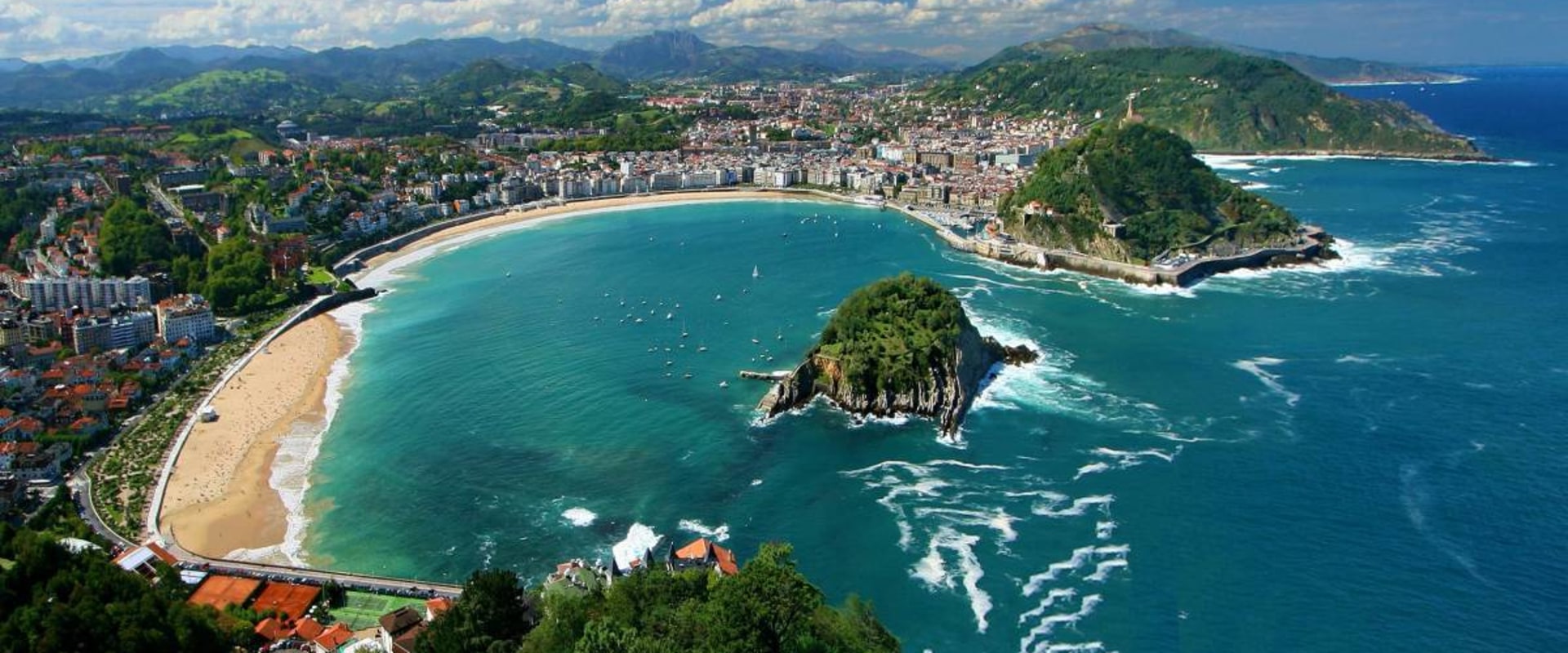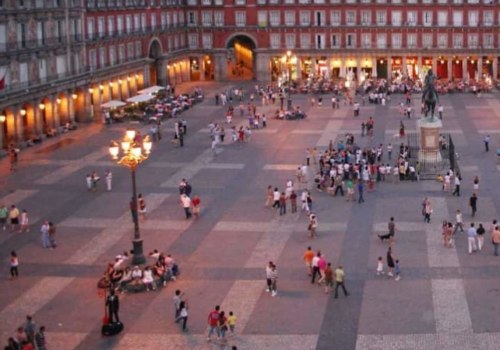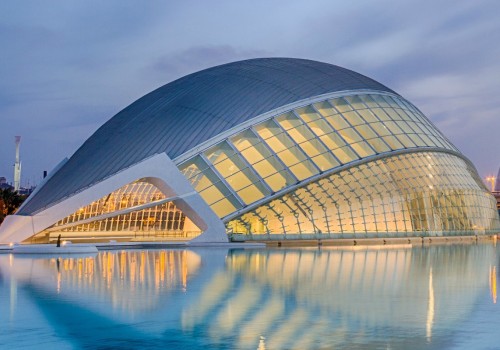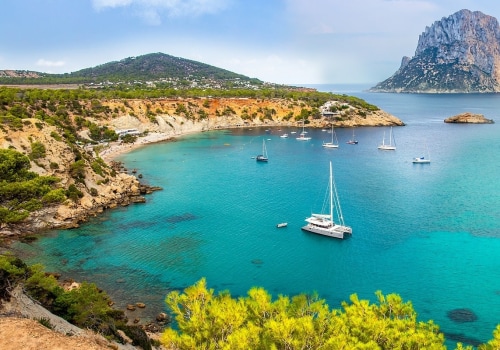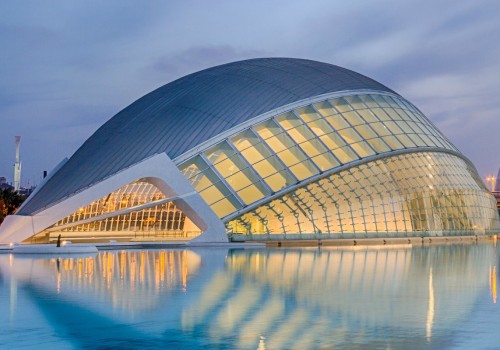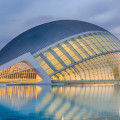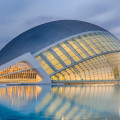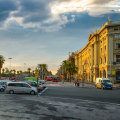In addition to summer tourism, other modalities have been developed in these areas such as cultural and monumental tourism, congresses, sports or leisure tourism, including such famous cities as Barcelona and Valencia, the largest ports on the Spanish Mediterranean coast. The gardens of the Alhambra and the Generalife, Granada Construction materials of Roman and Visigoth buildings were used in the construction, which began in 785, and by 1000 had grown to its current dimensions, its prayer hall with no less than nineteen corridors. No matter where you are or in which direction you look, its rows of columns and rounded Moorish arches line up in symmetrical patterns. San Lorenzo de El Escorial, about 45 kilometers northwest of Madrid, was the summer home of the kings of Spain, and in 1563, work began here on a huge complex, which would include a monastery, a church, a royal palace, a mausoleum, a library and a museum, all conceived as a monument to Philip II and his reign.
The result is an impressive collection of attractions, built around 16 courtyards, their rooms and structures connected by 16 kilometers of corridors. At its core is the church, whose highlight is the 30-meter-high altarpiece of Herrera, made of jasper and red marble and accessed by a stretch of 17 steps. La Giralda tower, Seville Cathedral and Alcázar combine to form a UNESCO World Heritage Site. The tower is a minaret, a masterpiece of Almohad architecture, according to UNESCO.
The cathedral has more interior space than St. Peter in Rome and a 37-meter high altar of carved statues completely covered with gold. The opposite Alcazar was started by the Moors in 712 and continued after the Christian reconquest by King Pedro in the 1300s in the ornate neo-Moorish style called Mudejar. The rooms and lounges are stunning, and the gardens are a pleasure to stroll, shaded by fragrant orange and lemon trees.
To the east is Santa Cruz, the old Jewish Quarter, a neighborhood of whitewashed houses, iron balconies and courtyards full of flowers. One of the most outstanding monuments of early Romanesque architecture, the cathedral was built between 1060 and 1211, and despite the Baroque transformation of the exterior in the 16th to 18th centuries, the interior remains in the purest early Romanesque style. You'll see these two periods at play as you enter the western front, through one of the most impressive church facades in Spain. Enter to look towards the Portico de la Gloria, part of the old west front now hidden by the 18th century façade.
This triple door is one of the largest and most magnificent collections of Romanesque sculpture in the world. The heartbeat of Spain's vibrant capital, Plaza Mayor, has played an important role in Madrid's life since the 16th century, when Philip II entrusted the task of designing it to his favorite architect Juan de Herrera, builder of El Escorial. Built for the Ibero-American Exhibition of 1929 to celebrate the regions of Spain, the Plaza de España is an impressive semicircular pavilion surrounded by colonnades. Beautiful panels of colored tiles representing each of the provinces of Spain overlook the long swimming pool, which is crossed by bridges.
It's a popular spot for strolling or paddling on a rental boat around the pool and under bridges. The largest and most lively beach is Playa Inglés in Maspalomas, which abounds with cafes, restaurants, shops, playgrounds and other attractions. At one end is one of the natural wonders of the archipelago, a vast protected area of gigantic sand dunes. These reach a height of up to 12 meters and change constantly as they are shaped by the wind and the sea.
To complete the illusion of the desert, you can ride a camel through this desolate and unearthly landscape. You can explore El Teide in several ways. You can drive or walk inside the caldera, the crater floor, 12 miles in diameter and an arid lunar landscape of colorful rock formations that is like driving towards the center of the earth. You can climb the Teide cone, but an easier way to get close to the top is by taking an eight-minute cable car ride.
On a clear day, the views cover the entire archipelago and can extend to North Africa, the closest land mass to the Canary Islands. The most spectacular is Arcos de la Frontera, whose square next to the Gothic church ends vertiginously on a 137-meter cliff, which overlooks a valley of olive, orange and almond trees. Its labyrinth of winding cobblestone streets lead to cafes and craft shops selling pottery and ceramics to a Moorish castle. A total of 19 of these villages with small white houses are located in the vicinity of the Grazalema Nature Reserve.
Grazalema and Zahara de la Sierra are two others worth seeing. A good starting point in the region is Jerez de la Frontera, home of flamenco and Andalusian thoroughbreds. See the precision ballet of these horses at the Royal Andalusian School of Equestrian Art and, to enjoy authentic flamenco, visit the Flamenco Cultural Center. Do you want more suggestions for your holidays?.
Spain maintains its position year after year in competitiveness and shows that this sector offers great investment opportunities. With excellent beaches, a fun nightlife, many cultural regions and historic cities, Spain is a great destination for any type of trip. A country of great geographical and cultural diversity, Spain surprises those who only know its reputation for an excellent beach holiday. There is everything from lush meadows and snowy mountains to huge swamps and deserts in the southeast.
While summer is high season because of the beaches, those wishing to avoid the crowds should consider visiting it in winter, as attractions such as the Alhambra in Granada and the Great Mosque of Cordoba won't be crowded. With 49 Natural Spaces and Natural Spaces, UNESCO declares Spain as the country with the largest number of biosphere reserves in the world, followed by the United States, Russia and China. Other notable paradors are located in Arcos de la Frontera, Ronda, Santillana del Mar (Altamira cave) and more than 100 destinations throughout Spain. When traveling in Spain is not easy to connect, you can buy prepaid Internet cards but with few paperwork.
Those looking for guidance on Spain's rich and diverse culinary traditions may want to consider taking a gastronomic tour. Not only the buildings, but the museums, the art rooms and the aquarium (by Félix Candela and the only building not designed by Calatrava) form a series of tourist attractions that are among the most popular in Spain. These are the three key points that the WEF considers essential to have a competitive advantage over other countries in tourism. In the next 6 chapters, you will quickly find the 41 most important statistics related to travel and tourism in Spain.
Among many places worth visiting are the prosperous capital of Spain, Madrid, the vibrant coastal city of Barcelona, the famous bulls of Pamplona, the main Andalusian cities with Islamic architecture, such as Seville, Granada and Córdoba, the Camino de San Pablo. The highest peak in Spain, this ancient volcano, but still boiling, is also one of the main natural wonders of Europe. Especially interesting is wine tourism, which has great potential given the attractiveness of the sector in Spain. Luxury yachts in Spain, - Yacht charter and sailing, one of the largest yacht charter companies in the world, can take care of all chartering requirements, from bareboat to crewed in Spain.
The Triangle of Museums in Madrid is home to the Prado Museum, the largest art museum in Spain with many of the most famous works by El Greco, Velázquez and Goya, as well as some notable works by Italian, Flemish, Dutch and German masters. . .
